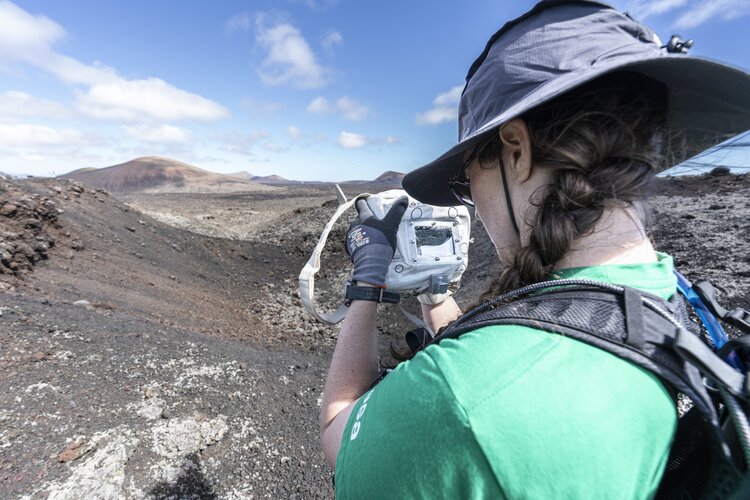ESA astronaut Rosemary Coogan points at a lunar-like landscape with a camera designed to take pictures on the surface of the Moon during the Artemis missions.
The seventh edition of the PANGAEA geology course trained her, ESA astronaut reserve member Arnaud Prost and Norishige Kanai from the Japanese space agency JAXA to be effective field explorers and act as the eyes of scientists in unique places in Europe.
When it comes to discovering new places, pictures play an important role. A camera set to capture amazing Moon images for humankind became part of the astronauts’ toolkit during the last week of the training in Lanzarote, Spain.
Rosemary was part of an international team of astronauts, engineers and scientists testing the Handheld Universal Lunar Camera (HULC) to improve its design for handheld use on the lunar surface.
During the Apollo programme, cameras didn’t have viewfinders, so astronauts were trained to aim the camera from the chest, where it was attached to the front of the spacesuit. In contrast, the Artemis camera’s buttons are rearranged for easier handling by astronauts wearing thick gloves during moonwalks. The Moon model is equipped with a thermal blanket that protects it from abrasive lunar dust and extreme temperatures.
HULC promises to provide sharp images in low light during Artemis III, a mission set to land on the South Pole of the Moon, close to permanently shadowed craters. Some of Europe’s best planetary scientists participating in PANGAEA were excited about the great amount of detail captured by the camera from a distance, both in shadowed and highly illuminated areas.
Rosemary had the chance to handle the camera during an imagery meeting with NASA in Europe in 2023. Now, she has tested the camera’s performance in realistic scenarios for geological exploration.
“This training is teaching us how to take the right samples, make the right descriptions, and take the right photos, so the scientists have everything they need,” she says.
One novelty was the use of a 200 mm telephoto lens that would allow crews to take images of distant objects and guide decisions about where to explore first during time-limited moonwalks.
For more Moon-like shots, check ESA's PANGAEA gallery with Artemis camera tests in Lanzarote, Spain.



 Image:
European settings for a Moon camera
Image:
European settings for a Moon camera